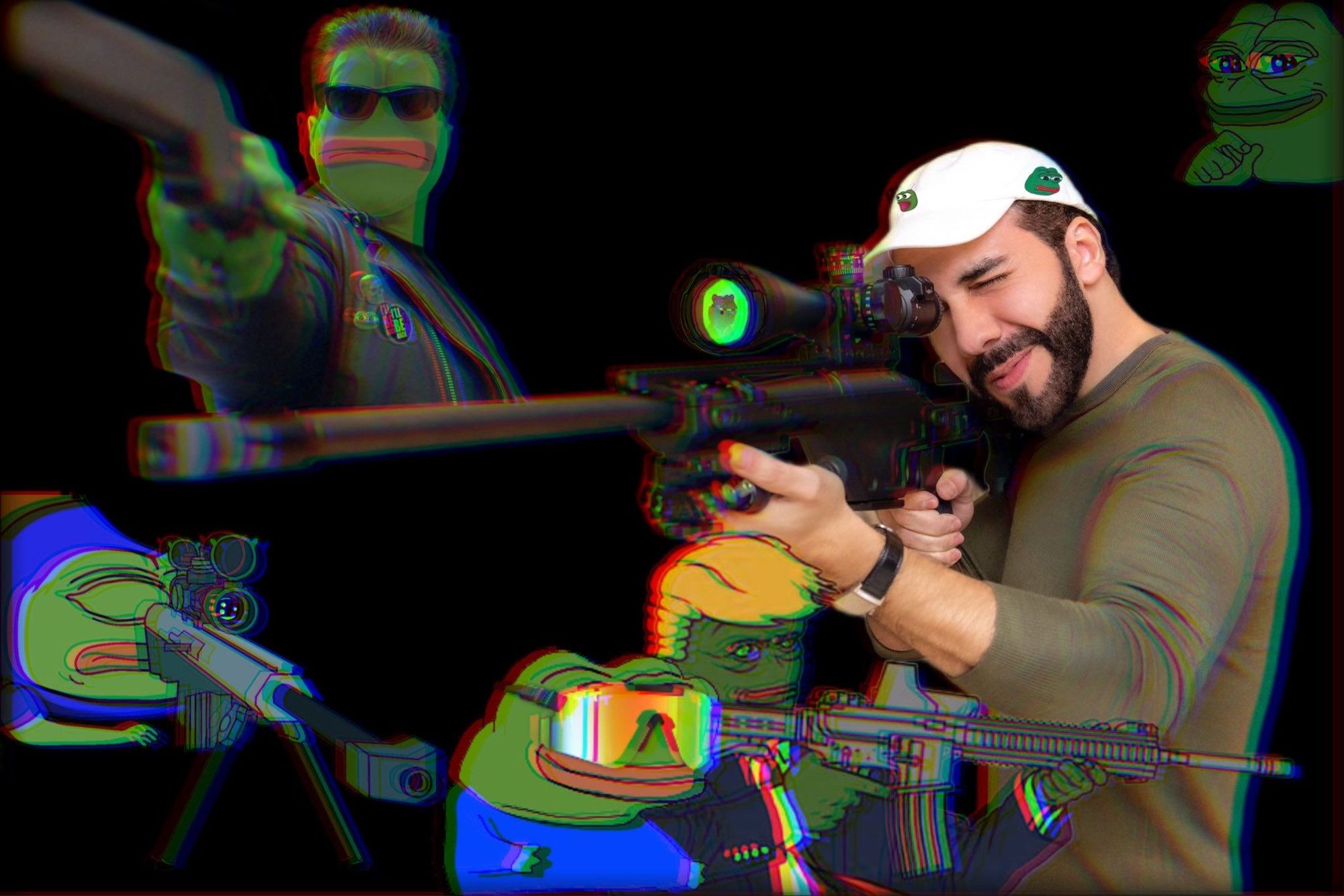Media Shadows
"An international cabal crafts an in-group, out-group narrative using nothing more than symbols, enabling individuals to feel a kinship with others across continents."

It is undeniable that media holds a powerful sway over our perceptions. The recent photo of Salvadorian president Nayib Bukele gripping a rifle, captioned in modern meme-speak: "New weaponry just dropped," is a proof of this influence. The image, a suspicious nod to the world's English-speaking youth, strikes a familiar chord within the terminally-online, younger American conservative audience. But is this image truly reflective of Bukele's beliefs, or is it simply a digital shadow cast on the wall of our cave?
If you're unfamiliar with the allegory, Plato describes a cave where prisoners are bound, forced to only see the shadows cast on a cave wall by objects behind them. These prisoners, never having seen the real objects, accept the shadows as their reality. Our internet connected societies hunger for dopamine; through these images, memes, and snippets of information (shadows) we find satiation. Bukele's photo is just one of those shadows: an image meant to resonate with a specific audience.
This memetic representation serves a dual purpose. For Bukele, it projects an image of strength, resistance, and independence. For the unwitting American viewer, the image and its aesthetic language tap into pre-existing notions about gun rights, self-reliance, and resistance against tyranny. The purpose of the image is not to inform you of Bukele's policy on firearms in El Salvador, or to remind Americans of the importance of their Second Amendment. It is a symbol, carefully designed to tap into and invoke a prior (mis)understanding of the world.
A viewer's reaction to this new symbol has already been predicted – it is simply a matter of reaching a target audience or demographic. An organic reaction to a figure, let's say for example Donald Trump, can be observed, measured, and analyzed. The digital panopticon we inhabit ensures all observable trends are dissected, in service of an existing regime that seeks to control its populace through coercion, rather than force.
The majority of the American conservatives using social media are simply not aware of Bukele's policies, the intricacies of Salvadorian politics, or the implications of the president's actions. They react not to Bukele the man, but to Bukele the symbol. The gun in his hand is not merely a weapon, but an aesthetic symbol, representing an alignment with a set of beliefs deeply embedded in the American conservative psyche. This is the power of media; an international cabal crafts an in-group, out-group narrative using nothing more than symbols, enabling individuals to feel a kinship with others across continents. A quantum entanglement of minds.
When media becomes the primary conduit of information and influence, and when images can be tailored, generated (using AI tools like DALL-E and Midjourney), and disseminated to elicit specific reactions, we open ourselves up to opinions and allegiances based on shadows, not realities. We find ourselves cheering for, or against international figures, policies, and events based on symbols — often without any understanding of the context or consequences.
Technological optimists praised humanity's unprecedented access to information as a step towards a world where the individual has more power and opportunities than ever before. The premise is flawed for two reasons: Firstly, we are not individuals–no one can agree upon what actually constitutes an individual, let alone provide an accurate explanation of society based on the premise of the so-called individual. Secondly, we are part of a world order that, rather than accepting and promoting the free flow of information, restricts and punishes certain perspectives. Of course, it is necessary for the continuation of liberal, tolerant societies to be intolerant of illiberal views. This is not a contradiction, even if the shadows dancing on the cave's walls would suggest otherwise. After all, the allegory insists that we are in fact prisoners.
